
Together, the San Francisco Bay, San Francisco Watershed, and the Sacramento-San Joaquin Delta form an interconnected and valuable resource system. A new study reveals this system will feel impacts of climate change with shifts in biological communities, rising sea level, and modified water supplies. (Photo Credit: Francis Parchaso, USGS)
Over the coming decades, California’s Bay-Delta system will feel impacts of global climate change with shifts in biological communities, rising sea level, and modified water supplies, according to a new study by the USGS and academic partners.
Together, the San Francisco Bay, San Francisco Watershed, and the Sacramento-San Joaquin Delta form an interconnected and valuable resource system.
This Bay-Delta system provides
- essential habitat for aquatic species, including Pacific salmon, steelhead trout, and delta smelt;
- irrigation water to millions of acres of farmland that produce crops valued at $36 billion per year; and
- water to 25 million people.
Deciding how best to meet the multiple (and sometimes conflicting) interests of those who value the resources of the Bay-Delta system already poses challenges to area resource managers. As the climate changes, the intensity of the challenges they face is likely to increase.
Therefore, as resource managers develop strategies to protect the Bay-Delta system — and the critical services it provides — they need to understand how global climate change will affect the system.
Managing local and regional resources in the face of global climate change
The impacts of climate change have been documented around the world. But when the consequences of Earth’s warming vary from one location to the next, how do our Nation’s regional and local resource managers — including those in the Bay-Delta area — prepare for the impacts that they, specifically, will face over the coming decades?
How will the effects of warming at the global level cascade down to impacts on the local resources we depend on?
A new study takes a first step in answering these questions, providing crucial information for difficult decisions regarding conservation, economic interests, and food and water security.
The study applies both fast and moderate climate-warming scenarios at a regional level to investigate how the Bay-Delta system would change from 2010 to 2099. Researchers examine how the Bay-Delta system will be impacted as global climate change alters the water supply, sea level, and habitats of the Bay-Delta system.
Some highlights from the study include the following impacts:
- The effects of increasing water temperature could reduce habitat quality for native species, such as the endangered delta smelt and winter-run Chinook salmon, and intensify the challenge of sustaining their populations.
- Water-resource planners will need to develop adaptation strategies to address potentially longer dry seasons, diminishing snow packs, and earlier snowmelt that leaves less water for runoff in the summer.
- As sea-level rise accelerates and as both earlier snowmelt and a shift in precipitation from snow to rain result in extreme water levels, the risk of flooding will increase.
Five conclusions
Based on the results of their study, the researchers came to five conclusions that those developing resource-management plans should know:
1. There is uncertainty about how the Bay-Delta system will evolve in the future (flexibility and adaptability will be necessary for effective adaptation strategies).
The researchers used two contrasting climate scenarios, one fast and one moderate, to both demonstrate and explore a range of climate possibilities. In some areas, the two scenarios show similar results; and in others, they demonstrate considerable variation stemming from different emission rates and climate sensitivity.
Comparing the results of the two scenarios suggests that resource managers can readily anticipate progressively increasing air and water temperature, salinity intrusion into the Bay-Delta system, more runoff in winter, and less runoff in spring and summer — but that the rate of change and the magnitude of extremes are uncertain, so the best strategies will be flexible, adaptable, and include contingency plans for multiple outcomes.
2. Today’s extremes could become tomorrow’s norms.
Both of the scenarios show big changes in the frequency of extreme events. The results indicate shifts into regimes of environmental conditions that residents and ecosystems have not experienced during the development of the Bay Area.
The results imply growing risks of coastal flooding, extinction of native fishes, and decreasing feasibility of some ecosystem restoration actions. However, by anticipating and preparing for these increased risks, communities can focus on the most effective conservation efforts and mitigate the potential damages from hazardous events.
3. It’s not just climate change (it’s also land-use change).
Over the past 150 years, massive landscape modifications, water development, pollutants, and non-native species have transformed the Bay-Delta system.
Many drivers will continue to transform coastal ecosystems, including population growth and urbanization, nutrient enrichment, potentially catastrophic levee failures from storms or earthquakes, modified reservoir operations and water conveyances, and ecosystem restoration efforts.
By considering all drivers of change, resource managers will be able to develop more comprehensive and more effective strategies for managing the resources of the Bay-Delta system.
4. Biological community changes are inevitable.
As the environmental conditions in the Bay-Delta system change — as the delta’s waters warm, clear, and increase in salinity; as summer river temperatures more frequently reach levels fatal to some species; and as drought periods are extended — the native species that are adapted to past and current conditions will be impacted.
The study indicates an increasing risk of extinction of native species and increasing dominance of nonnative species. For example, delta smelt are adapted to cool, turbid, low salinity habitats, but as delta waters warm, clear, and increase in salinity, the area may no longer be suitable for sustaining smelt populations.
Even a small change can trigger a big shift — one that completely reorganizes the biological communities — in an ecosystem. With this understanding, resource managers can anticipate surprises, develop contingency plans, and watch for unexpected shifts in habitats and biological communities.
5. The challenge of meeting California’s water demands will intensify
The study shows the potential for longer dry seasons, extended droughts, and extreme floods. Diminishing snow packs will cause earlier water flow into reservoirs, meaning that reservoir management could be more about controlling floods and less about storing water.
In addition, salinity intrusion into the estuary could affect the quality of drinking water to communities that use the delta for municipal water supply. One mitigation strategy could be additional release of freshwater.
Such decisions in allocating water for human consumption and biological needs will be increasingly difficult, but the first step in making those decisions is understanding how the resource is changing and which measures could prove useful and which futile.
Facing the challenges
The San Francisco Bay is the largest estuary on the U.S. West Coast. In addition to serving as a major source of water for irrigating crops and public water supply, the Bay-Delta system provides habitat for endemic species and supports fisheries, such as English sole and Dungeness crab. Fourteen species of migratory or resident fishes are imperiled. And as sea level rises, 270,000 people and $62 billion of development are at risk of flooding along the shores of the estuary.
With so much at stake, the consequences of not preparing for changes to the system could be dire. However, the USGS, the Bureau of Reclamation, the Fish and Wildlife Service, NOAA, and the State of California are working together to address these issues.
There are also collaborative initiatives, such as the Bay Delta Conservation Plan and the Delta Stewardship Council’s Delta Plan, working to address problems in the Bay-Delta system.
In any budget, government and other agencies need to make smart decisions that make the most of the financial resources available to address problems and provide needed services. In tight budget times, good use of resources becomes essential. Studies like this provide crucial information to support informed decisions.
The benefits of this study extend beyond the Bay Area. In addition to providing a view of what the Bay-Delta system could look like in the future, this research provides general lessons for those developing strategies for coping with climate change in other coastal landscapes.
Anticipation, flexibility, and adaptability will be the keys to the success of those strategies.
To read more about the methodology, results, and lessons learned from this study, read the article, “Projected Evolution of California’s San Francisco Bay-Delta-River System in a Century of Climate Change,” in the journal, PLoS ONE.
Related:

Added: Monday, July 23rd, 2012
By: Jon Campbell
The world's longest-running Earth-observing satellite program.

Added: Sunday, July 22nd, 2012
By: Barbara Wilcox
Dust storms July 21-22 blinded motorists, grounded flights and knocked out
electricity. What’s causing the dust storms?

Added: Monday, July 16th, 2012
By: Kara Capelli, Jenn LaVista, Jess Robertson
The majority of the nation is facing dry conditions; in most areas drought conditions are expected to persist or intensify. Read more

Added: Friday, June 8th, 2012
By: Jon Campbell, joncampbell@usgs.gov
A contest to celebrate 40 years of Landsat. Read more

Added: Monday, June 4th, 2012
By: David Hebert, dhebert@usgs.gov
Please comment on the USGS’ draft science strategies! Read more

Added: Monday, April 2nd, 2012
by Catherine Puckett
Timing is everything! Consider helping track changes in spring’s arrival

Added: Friday, March 30th, 2012
By Cheryl O'Brien
Need a historical map for your genealogy research? You are in luck. We’ve got what you need! Download and view USGS historical maps from the comfort of your own home.

Added: Wednesday, March 14th, 2012
By Kara Capelli
Flood Safety Awareness Week is March. 12-16. What can you do to prepare?

Added: Tuesday, March 13th, 2012
By Kara Capelli and Kevin Dennehy
National Groundwater Awareness Week is Mar. 11-17, 2012. See how USGS science is connecting groundwater and surface water.

Added: Friday, March 9th, 2012
By Christina Nyquist
Since Japan’s March 11, 2011, Tohoku earthquake and subsequent tsunami, scientists at the USGS have learned much to help better prepare for a large earthquake in the United States.

Added: Wednesday, March 7th, 2012
By Catherine Puckett
Five USGS employees honored with Distinguished Service Awards for their service to the nation

Added: Tuesday, March 6th, 2012
By Christina Nyquist
The USGS and UNESCO have produced a book that gives us a new way to look at our shared global heritage.

Added: Wednesday, February 15th, 2012
Kara Capelli and Jeffrey Fischer
Groundwater in aquifers on the East Coast and in the Central U.S. has the highest risk of contamination from radium, a naturally occurring radioactive element and known carcinogen.
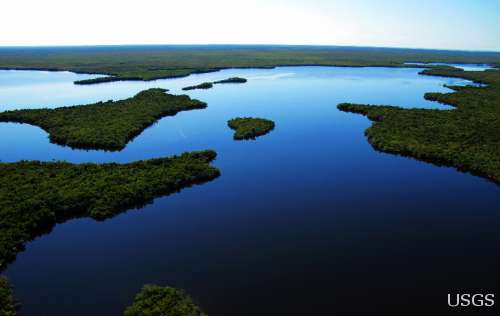
Added: Monday, February 13th, 2012
The proposed USGS budget reflects research priorities to respond to nationally relevant issues, including water quantity and quality, ecosystem restoration, hydraulic fracturing, natural disasters such as floods and earthquakes, and support for the National Ocean Policy, and has a large R&D component.
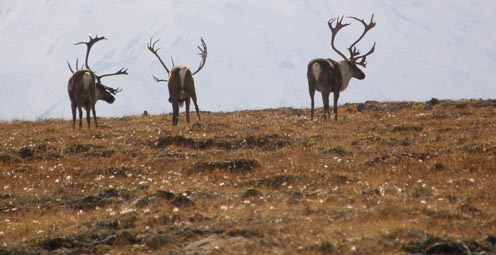
Added: Tuesday, December 20th, 2011
By Layne Adams with Catherine Puckett
Caribou expert Layne Adams discusses the lives of reindeer — apart from their famous role on Christmas Eve. How they survive the cold.

Added: Wednesday, November 30th, 2011
By <a href="mailto:jrobertson@usgs.gov ">Jessica Robertson, U.S. Geological Survey</a>
Climate science is helping to predict food shortages, identify impacts on human health, and prepare for future conditions.

Added: Wednesday, November 16th, 2011
By Jon Campbell
As demand grows, Landsat data can help us track trends in key resources. Remote-sensing satellites help scientists to observe our world, monitor changes, and detect critical trends in forestry, water, crops, and urban landscapes. Learn more.

Added: Monday, October 17th, 2011
By Clarice Nassif Ransom
It's only the beginning of their careers, but these 3 young scientists have forged ahead with innovative research at the frontiers of science. How they've transformed their fields
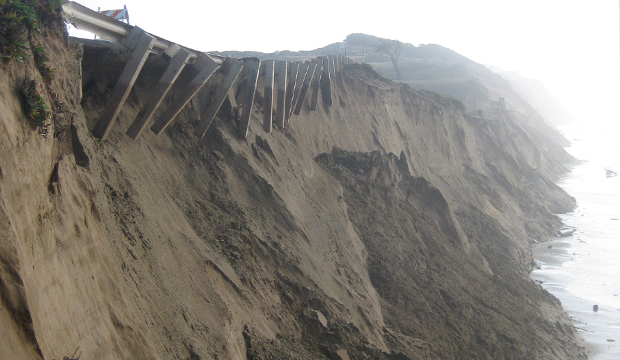
Added: Tuesday, October 11th, 2011
By Cheryl O'Brien and Tania Larson
Oct. 9-15, 2011, is Earth Science Week, themed "Our-Ever Changing Earth," and Oct. 12, 2011, is International Day for Natural Disaster Reduction. Answers to questions posed by a changing world

Added: Friday, October 7th, 2011
By Patuxent Wildlife Research Center
By 1936, devastating losses of wildlife populations were threatening the Nation’s natural resource heritage. America's first wildlife research center
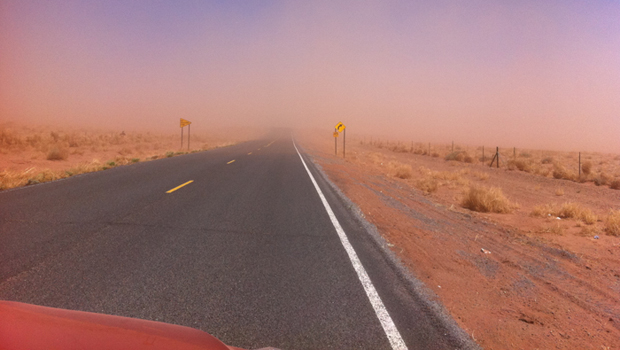
Added: Thursday, October 6th, 2011
By Seth M. Munson, Jayne Belnap, and Richard L. Reynolds
A dust storm on Tuesday, October 4, blinded motorists and caused a large string of motor vehicle crashes, multiple injuries, and at least one death. What’s causing the dust storms?
Added: Tuesday, August 16th, 2011
USGS scientists study walruses off the northwestern Alaska coast in August as part of their ongoing study of how the Pacific walrus are responding to reduced sea ice conditions in late summer and fall.
Added: Monday, August 15th, 2011
USGS scientists are collecting water samples and other data to determine trends in ocean acidification from the least explored ocean in the world.
Added: Monday, August 1st, 2011
In support of the Famine Early Warning Systems Network, USGS scientists use satellite remote sensing to assess agricultural conditions that foretell famine.
Added: Thursday, July 14th, 2011
New USGS research shows that rice could become adapted to climate change and some catastrophic events by colonizing its seeds or plants with the spores of tiny naturally occurring fungi. The DNA of the rice plant itself is not changed; instead, researchers are re-creating what normally happens in nature.
Added: Saturday, July 9th, 2011
Now that field work has wrapped up at the Ice Age "Snowmastodon" fossil site near Snowmass Village, Colo., USGS and other scientists will begin work on unraveling the climate and environmental history of the area.
Added: Thursday, July 7th, 2011
USGS scientists are studying the Earth’s conditions 3 million years ago to gain insight into the impacts of future climate. Join us Aug. 3 in Reston, Va., to learn how this information is used to better understand the magnitude of changes forecast for the end of this century.
Added: Thursday, June 30th, 2011
USGS crews continue to measure streamflow and collect water quality and sediment samples in the Ohio and Mississippi River basins using state-of-art instruments.
Added: Monday, April 18th, 2011
Over the past four decades, about 14% of the ice and permanent snow of Washington's Mount Rainier has melted due to combined recent warming and reduced precipitation.
Added: Monday, March 28th, 2011
USGS science supports management, conservation, and restoration of imperiled, at-risk, and endangered species.
Added: Sunday, March 27th, 2011
In a unique application of data, this year's report provides the nation's first assessment of birds on public lands and waters.
Added: Sunday, March 27th, 2011
The USGS, NASA, and other organizations and Federal agencies are studying how climate change affects wildlife and ecosystems.

Added: Friday, March 11th, 2011
Using coral growth records and measurements of changing ocean chemistry from increased atmospheric CO2, USGS scientists are providing a foundation for predicting future impacts of ocean acidification and sea-level rise to coral reefs.
Added: Friday, February 25th, 2011
Increased dust storm activity may result from enhanced aridity in the Southwest, according to a USGS study.
Added: Wednesday, February 9th, 2011
Provide your input on the draft USGS Global Change Science Strategy by April 8, 2011.
Added: Wednesday, December 15th, 2010
Sea-ice habitats essential to polar bears would likely respond positively should more curbs be placed on global greenhouse gas emissions, according to a new modeling study published today in the journal, Nature.
Added: Monday, December 13th, 2010
Landscape photos taken in the same place but many years apart reveal dramatic changes due to human and natural factors. The USGS Desert Laboratory Repeat Photography Collection, the largest archive of its kind
in the world, is 50 years old.
Added: Monday, December 13th, 2010
Decreasing pH and warming temperatures are changing ocean conditions and affecting coral and algal growth in South Florida. USGS scientists are conducting field measurements to learn more.
Added: Wednesday, December 1st, 2010
Many coastal wetlands worldwide including several on the U.S. Atlantic coast may be more sensitive than previously thought to climate change and sea-level rise in the this century.
Added: Monday, November 22nd, 2010
USGS findings support recent predictions that climate change will stress ecosystems at lower elevations more than higher elevations. This information may guide future conservation efforts in helping decision makers develop regional landscape predictions about biological responses to climate changes.
Added: Thursday, November 18th, 2010
The Earth as Art 3 collection, the latest set of Landsat satellite images selected for their artistic quality, reveals an intricate beauty in Earth’s natural patterns.
Added: Tuesday, November 9th, 2010
USGS scientists are investigating sea turtles and their habitats in Dry Tortugas National Park to provide insight that will be used as decision-support tools for managing coral ecosystems.
Added: Tuesday, November 9th, 2010
Looking for information on natural resources, natural hazards, geospatial data, and more? The USGS Education site provides great resources, including lessons, data, maps, and more, to support teaching, learning, K-12 education, and university-level inquiry and research.
Added: Thursday, September 23rd, 2010
The timing of animal migration and reproduction, and observing when plants send out new leaves and bear fruit, is increasingly important in understanding how climate change affects biological and hydrologic systems. Photo credit Copyright C Brandon Cole.
Added: Tuesday, June 22nd, 2010
The United States Group on Earth Observations (USGEO) is working to connect Earth observations with public health, agriculture, climate, and data management and dissemination.
Added: Tuesday, June 22nd, 2010
USGS studies the relationships among earth surface processes, ecological systems, understanding current changes in the context of prehistoric and recent earth processes, distinguishing between natural and human-influenced changes, and recognizing ecological and physical responses to changes in climate.
Added: Tuesday, June 22nd, 2010
The USGS Science Strategy is a comprehensive report to critically examine the USGS's major science goals and priorities for the coming decade. The USGS is moving forward with these strategic science directions in response to the challenges that our Nation's future faces and for the stewards of our Federal lands.

Added: Tuesday, August 21st, 2012
By: Prasad Thenkabail
7 p.m.—Public lecture (also live-streamed over the Internet)

Added: Tuesday, May 15th, 2012
By: Natalie Sexton
USGS-led survey finds that national wildlife refuges rate highly with visitors.

Added: Wednesday, May 2nd, 2012
By: Jessica Robertson
As the climate has warmed, many plants are starting to grow leaves and bloom flowers earlier. A new study published in the journal, Nature, suggests that most field experiments may underestimate the degree to which the timing of leafing and flowering changes with global warming.

Added: Tuesday, May 1st, 2012
By Barbara Wilcox
Stressed agricultural lands may be releasing less of the moisture needed to protect the breadbasket of a continent.

Added: Thursday, April 12th, 2012
By: Jessica Robertson
Spring rains in the eastern Horn of Africa are projected to begin late this year and be substantially lower than normal.

Added: Wednesday, March 21st, 2012
By Jessica Robertson
In recognition of World Forestry Day, let’s take a glimpse at USGS science to understand the fate of forests from climate change.

Added: Thursday, March 1st, 2012
By: Jessica Robertson
A new study concludes that fossil fuel emissions are likely contributors to a substantial amount of organic carbon found on glaciers in Alaska. Fossil fuel emissions, which contain organic carbon, can speed up the rate of glacier melt when deposited on glacier surfaces. In addition, the organic molecules associated with these deposits can be transportedContinue Reading
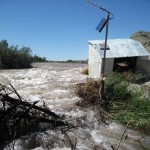
Added: Wednesday, February 1st, 2012
David Hebert
The U.S. Geological Survey had a very busy 2011 — below are a few of our highlights from last year.

Added: Tuesday, January 24th, 2012
Carolyn Ruppel, USGS Gas Hydrates Project, and Diane Noserale, USGS Communications
Despite news articles warning of large-scale releases of methane due to climate change, recent research indicates that most of the world’s gas hydrate deposits should remain stable for the next few thousand years.

Added: Wednesday, January 18th, 2012
Melanie Gade
Join us on February 1 to view the Earth from space, and discuss the profound impact Landsat has on many facets of our economy, safety, and environment.

Added: Tuesday, January 17th, 2012
Thierry Work, Jessica Robertson
Scientists have discovered an outbreak of coral disease called Montipora White Syndrome in Kāneohe Bay, Oahu. The affected coral are of the species Montipora capitata, also known as rice coral.

Added: Monday, November 14th, 2011
Alex Demas, Diane Noserale
USGS scientists will join thousands of scientists, managers, and decision makers in Boston this week to present new findings on toxics at the Society for Environmental Toxicology and Chemistry (SETAC) conference in the Hynes Convention Center, Nov. 13-17.

Added: Thursday, November 3rd, 2011
Bill Rambo, Amelia Barrales
On Nov. 3, USGS scientists Patrick Barnard and William Ellsworth will present a public lecture in Menlo Park, CA, providing Bay Area residents information about USGS research in the San Francisco Bay Area, including recent discoveries beneath San Francisco Bay and ongoing studies to better understand earthquake probabilities and the potential hazards associated with strong ground shaking.

Added: Monday, October 24th, 2011
Jessica Robertson
Rivers and streams in the United States are releasing substantially more carbon dioxide into the atmosphere than previously thought.

Added: Friday, September 23rd, 2011
Jessica Robertson
Climate Change Impacts to Tribal Communities The USGS is working with Native American communities and organizations to understand climate change impacts to their land and neighborhoods. Projects include interviews with indigenous Alaskans to understand their personal observations of climate change, as well as studying how climate change is impacting sand dunes and posing risksContinue Reading

Added: Friday, September 23rd, 2011
Jessica Robertson
As climate changes, it affects the timing of when leaves emerge, the amount of foliage that grows as well as the timeframe when leaves begin to fall.

Added: Friday, September 16th, 2011
Jessica Robertson
How will accelerated glacial melting over the next 50 years as a result of climate change affect the unique Gulf of Alaska and Copper River coastal ecosystems? USGS scientists are studying these processes and impacts.
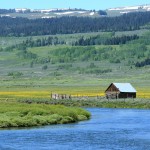
Added: Friday, September 16th, 2011
Jessica Robertson
USGS scientists are assessing the potential to remove CO2 from the atmosphere for storage in other Earth systems through a process called carbon sequestration.
